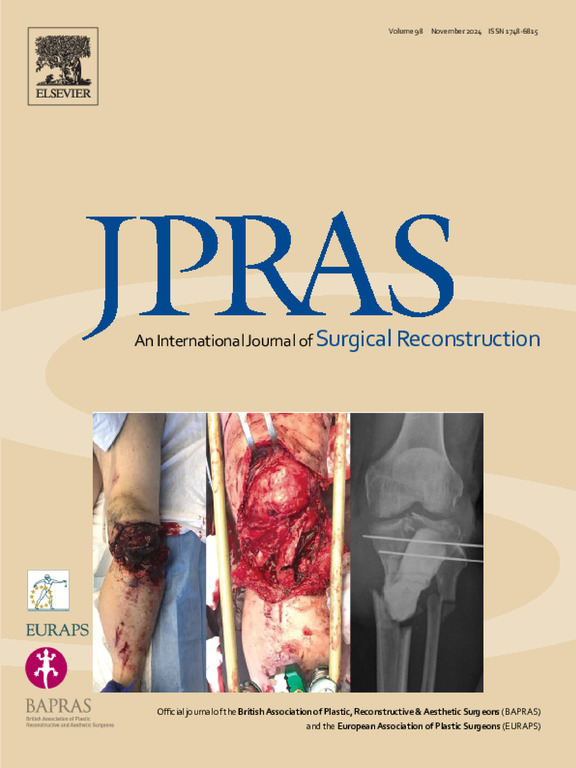Umbilical morphometry and centile curves in boys aged 1-14 years: Establishing reference values for umbilical reconstruction
IF 2
3区 医学
Q2 SURGERY
Journal of Plastic Reconstructive and Aesthetic Surgery
Pub Date : 2025-03-11
DOI:10.1016/j.bjps.2025.03.012
引用次数: 0
Abstract
Umbilicoplasty is essential for the reconstruction of congenital malformations such as bladder-exstrophy-epispadias complex and gastroschisis. Reference values for umbilical morphometry are critical for anatomically acceptable outcomes.
Objective
To measure vertical height and width of the umbilicus in male participants aged 1–14 years and generate age-specific centile curves for umbilical reconstruction.
Methods
This retrospective study analyzed computed tomography data from 887 male participants aged 1–14 years; those with previous abdominal surgeries or pathologies were excluded. Umbilical dimensions were measured in the coronal and axial planes. Generalized Additive Models for Location, Scale, and Shape modeling generated centile curves (3rd to 97th) for umbilical dimensions.
Results
The mean umbilical height and width were 16.67±5.54 mm and 16.5±4.52 mm, respectively, both positively correlating with age. The 50th percentile showed annual growth rates of ∼0.93 mm (height) and ∼0.75 mm (width). In younger children, the umbilicus appeared as an oblate spheroid; width exceeded height. Dimensions equalized around 4 years of age; thereafter, the umbilicus developed vertical ellipticity, with height exceeding width during puberty.
Conclusion
These findings provide insights into umbilical morphological development during childhood and adolescence, offering valuable reference data for umbilical reconstruction in case of various malformations and post-transumbilical procedures.
求助全文
约1分钟内获得全文
求助全文
来源期刊
CiteScore
3.10
自引率
11.10%
发文量
578
审稿时长
3.5 months
期刊介绍:
JPRAS An International Journal of Surgical Reconstruction is one of the world''s leading international journals, covering all the reconstructive and aesthetic aspects of plastic surgery.
The journal presents the latest surgical procedures with audit and outcome studies of new and established techniques in plastic surgery including: cleft lip and palate and other heads and neck surgery, hand surgery, lower limb trauma, burns, skin cancer, breast surgery and aesthetic surgery.

 求助内容:
求助内容: 应助结果提醒方式:
应助结果提醒方式:


